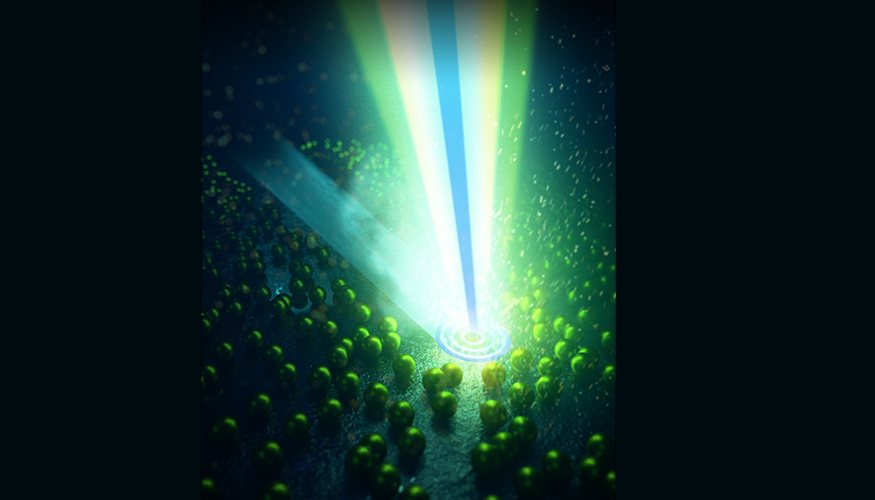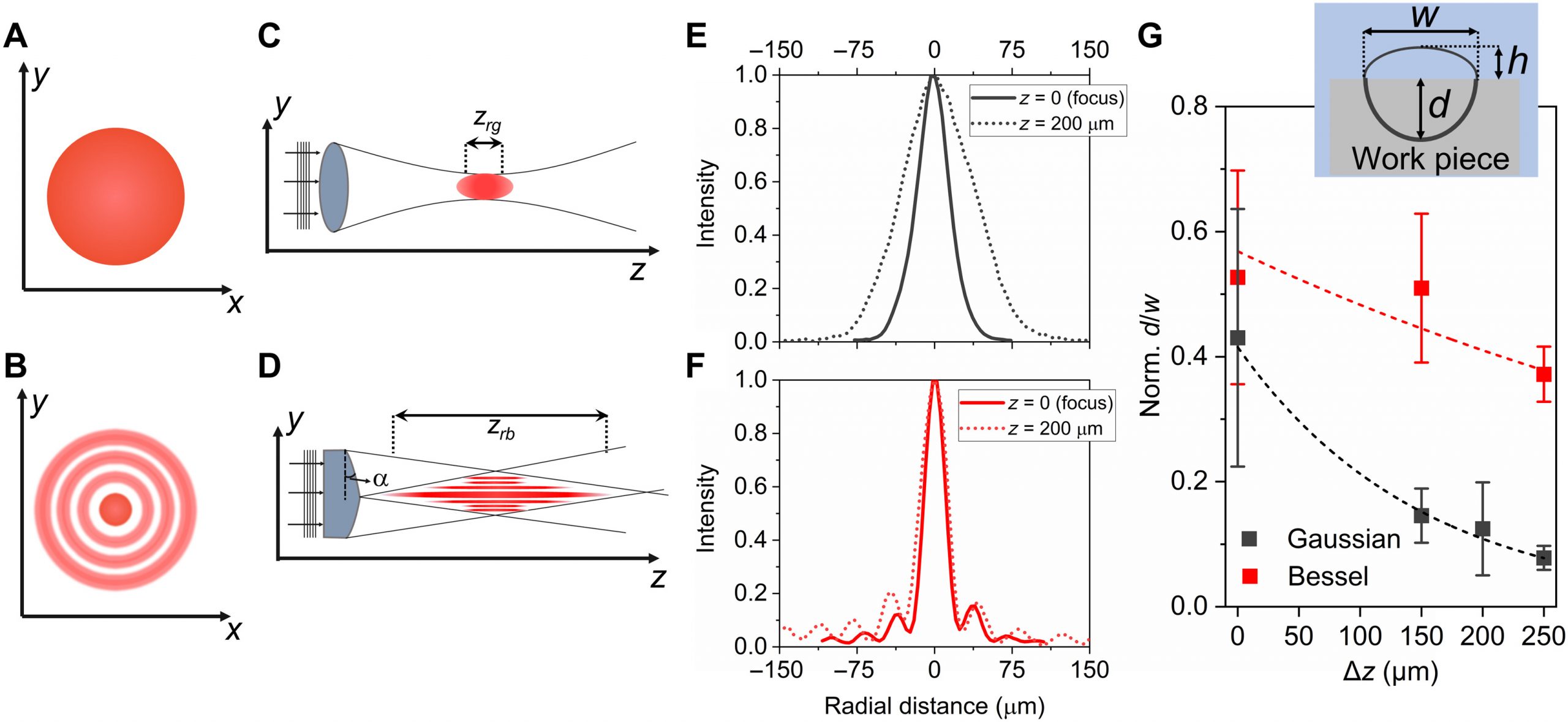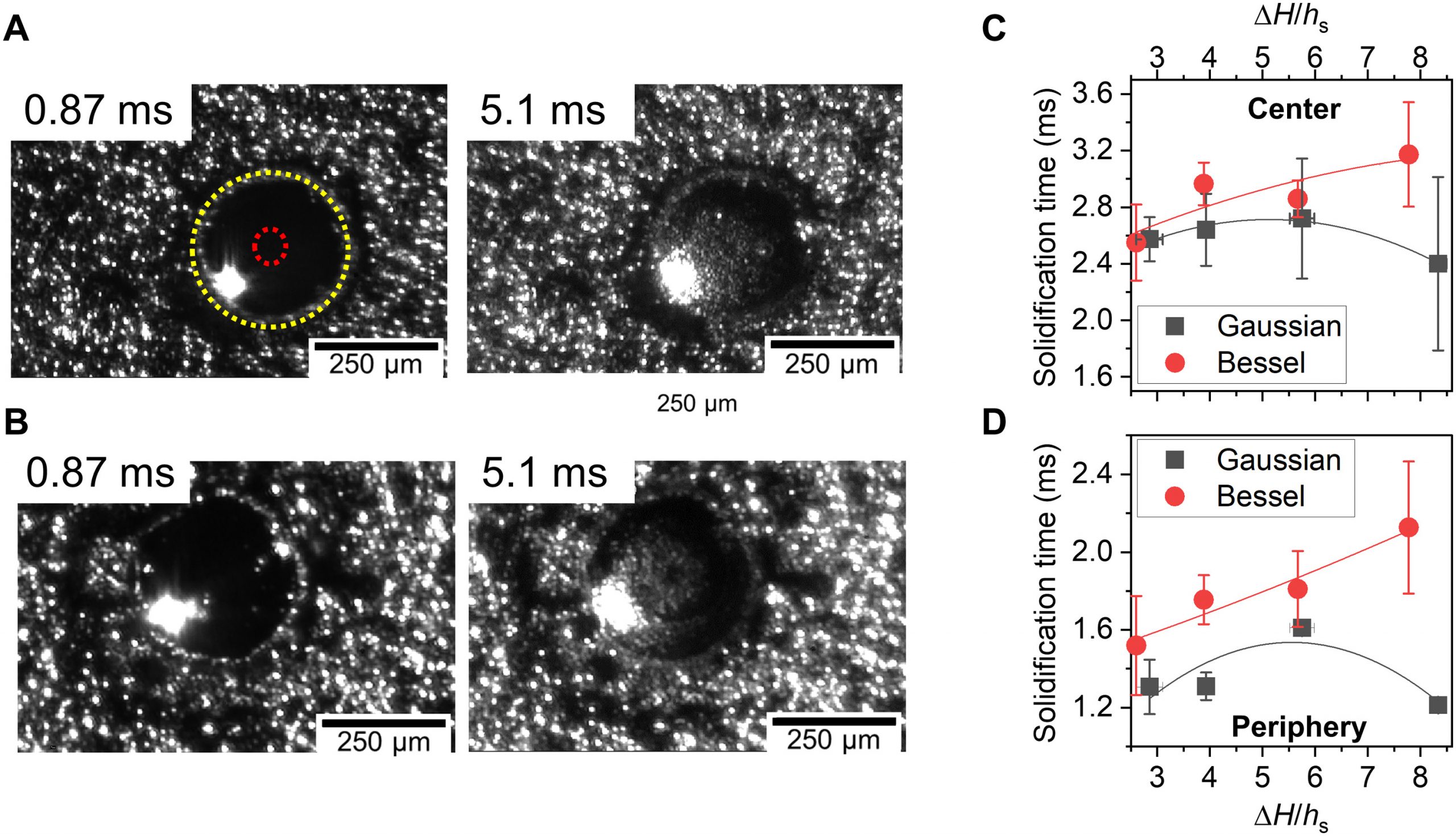The 2021 3D Printing Industry Awards shortlists are open for voting, have your say now.
Researchers at Lawrence Livermore National Laboratory (LLNL) are seeking to address the drawbacks of laser beams traditionally used in metal 3D printing.
By exploring alternative shapes to the Gaussian beams commonly used in laser-based 3D printing processes such as laser powder bed fusion (LPBF), the researchers hope to reduce porosity and defects in metal parts that can lead to poor mechanical performance.
To overcome such issues, the researchers are exploring how exotic optical beam shapes, known as Bessel beams, can reduce the likelihood of pore formation and “keyholing”, where bubbles are created in the melt pool that then form pores in finished parts.
“Using Gaussian beams is a lot like using a flamethrower to cook your food; you don’t have a lot of control over how heat is deposited around the material,” said Thej Tumkur Umanath, LLNL Research Scientist and lead author of the study. “With a Bessel Beam, the fact that we redistribute some of that energy away from the center means we can engineer thermal profiles and reduce thermal gradients to aid microstructural grain refinement and, ultimately, result in denser parts and smoother surfaces.”

Drawbacks of conventional laser beams
The majority of off-the-shelf, high-power laser systems utilize Gaussian beam shapes. While such laser-based 3D printing techniques have advanced design complexity within the production of metal parts, they can also lead to undesirable levels of porosity and potentially poor mechanical performance.
In recent years, a fair amount of research has been undertaken in this area to improve LPBF 3D printing technologies and avoid defects in metal printed parts. Such attempts have involved the use of LEDs instead of lasers to melt powder, the development of “smart” baseplates, and better balancing heat within the build chamber to reduce a component’s residual stress and distortion.
Now, the LLNL team is investigating how the comparatively low-cost method of laser beam shaping could further enhance the LPBF printing process and reduce porosity in printed metal parts.

Gaussian vs Bessel beams
According to the LLNL researchers, the use of Gaussian beams in the LPBF 3D printing process can lead to large thermal gradients and complex melt pool instabilities where the laser meets the metal powder. Gaussian beams can also cause keyholing, which leads to degraded mechanical performance in finished parts.
Unlike Gaussian beams, Bessel beams are non-diffracting and do not diverge when they propagate. The beam shape is reminiscent of a bullseye pattern, and in addition to being non-diffracting possesses other unique properties such as self-healing.
The non-diffractive properties of Bessel beams afford a greater depth of focus and increased tolerance to the placement of the workpiece in regards to the laser’s focal point. As a result, companies could potentially forego expensive techniques required to re-position in-progress builds within the laser’s depth of focus each time a layer of metal powder is deposited.
These properties prompted the LLNL researchers to experiment with Bessel beam shapes to see if they could overcome some of the most pressing concerns in LPBF 3D printing.
“Bessel beams have been used extensively in imaging, microscopy and other optical applications for their non-diffractive and self-healing properties, but beam-shape engineering approaches are rather uncommon in laser-based manufacturing applications,” continued Tumkur. “Our work addresses the seeming disconnect between optical physics and materials engineering in the metal additive manufacturing community by incorporating designer beam shapes to achieve control over melt pool dynamics.”

Experimenting with beam shaping
To achieve the Bessel beam shape, the LLML researchers ran a laser through two conical lenses to produce a donut shape, and then passed it through additional optics and a scanner to create rings around the central beam. The setup was installed in a commercial 3D printer in LLNL’s Advanced Manufacturing Laboratory and was used to fabricate cubes and other shapes from stainless steel powder.
To study the effects of their laser beam shaping experiment, the researchers used high-speed imaging. Observation of the melt pool dynamics revealed a substantial reduction in melt pool turbulence, while spatter – the molten metal particles that fly from a laser’s path during a build – was mitigated significantly. It is spatter that tends to lead to pore formation in metal 3D printed parts, so the fact that this effect was reduced could be a positive step forwards in improving the LPBF process.
“Industry has long sought the ability to increase control of the LPBF process to minimize defects,” said Ibo Matthews, Principal Investigator for the study. “Introducing complex structure to the laser beam adds increased flexibility to precisely control the laser-material interaction, heat deposition and ultimately the quality of the prints.”
The team also carried out a variety of mechanical studies and simulations, which found that parts built using Bessel beams were denser, stronger, and had more robust tensile properties than those fabricated using conventional Gaussian beams.
The researchers simulated the interaction of both Gaussian and Bessel beam laser shapes with single tracks of metal powder, within which the Bessel beam demonstrated improved thermal gradients over Gaussian beams. As a result, this was estimated to encourage better microstructure formation while avoiding the generation of “hot spots”.

The benefits of beam shaping
The researchers sought to explore how beam shaping could improve the quality of LPBF 3D printed metal parts due to its low-cost in comparison to alternative scanning strategies. By incorporating simple optical elements, the method could be executed at little cost while negating the need for expensive and time-consuming post-processing techniques required by parts built with Gaussian beams.
“There’s a big need to produce parts that are robust and defect-free, with the ability to print very large structures in a cost-effective fashion,” said Tumkur. “To make 3D printing truly compatible with industrial standards and move beyond conventional manufacturing approaches, we need to address some fundamental issues that occur at very short temporal regimes and microstructural scales.”
The LLNL team is also experimenting with other beam shaping techniques as part of the laboratory’s ongoing partnership with GE Global Research. Going forward, the researchers will look to develop complex laser beam and polarization-shaping techniques to improve control over the quality of printed parts.
Tumkur continued: “I think beam shaping is really the way to go because it can be applied to print a wide range of metals ubiquitously and be incorporated into commercial printing systems without posing significant integrability challenges as other alternate techniques tend to do.”
Further information on the study can be found in the paper titled: “Nondiffractive beam shaping for enhanced optothermal control in metal additive manufacturing,” published in the Science Advances journal. The study is co-authored by T. Voisin, R. Shi, P. Depond, T. Roehling, S. Wu, M. Crumb, J. Roehling, and G. Guss, T. Tumkur, S. Khairallah, and M. Matthews.
Subscribe to the 3D Printing Industry newsletter for the latest news in additive manufacturing. You can also stay connected by following us on Twitter and liking us on Facebook.
Looking for a career in additive manufacturing? Visit 3D Printing Jobs for a selection of roles in the industry.
Subscribe to our YouTube channel for the latest 3D printing video shorts, reviews and webinar replays.
Featured image shows LLNL researchers are experimenting with Bessel beams to address porosity and defects in metal 3D printing. Photo via Veronica Chen/LLNL.


